#marbled paper
Text
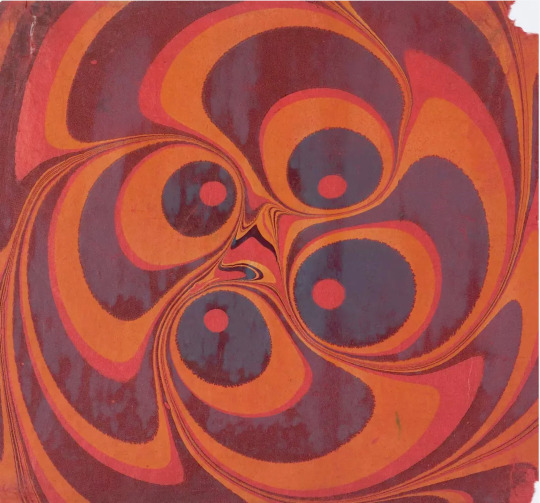
Koloman Moser, marbled paper technique, 1904. Vienna, via Leopoldmuseum
For this age-old process a shallow tray is filled with oil paints which are then made into patterns or various motifs using a needle or marbling comb. Subsequently, a piece of paper is dipped into the tray to absorb the paint. These papers were either used as endpapers or covers for books, or as autonomous artworks.
426 notes
·
View notes
Photo
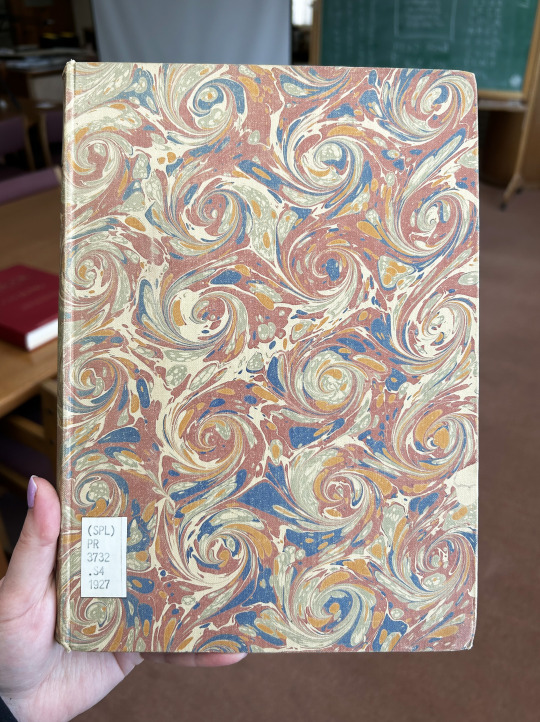
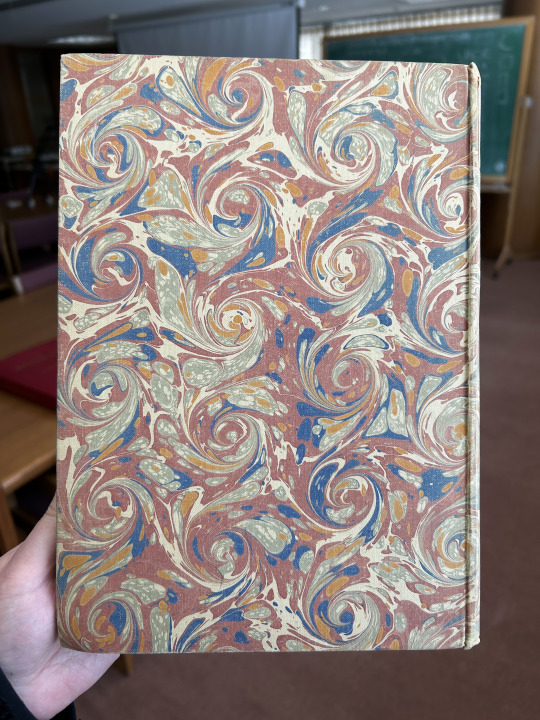

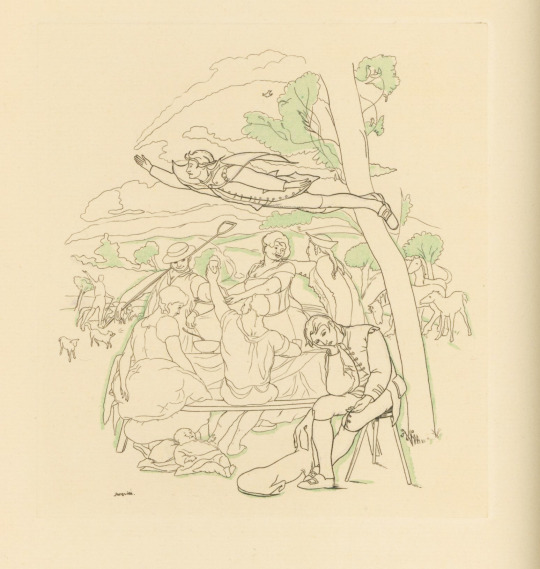




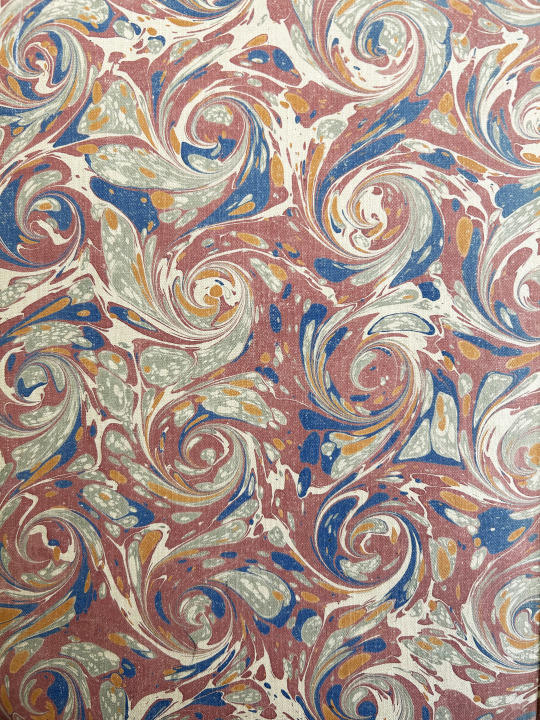
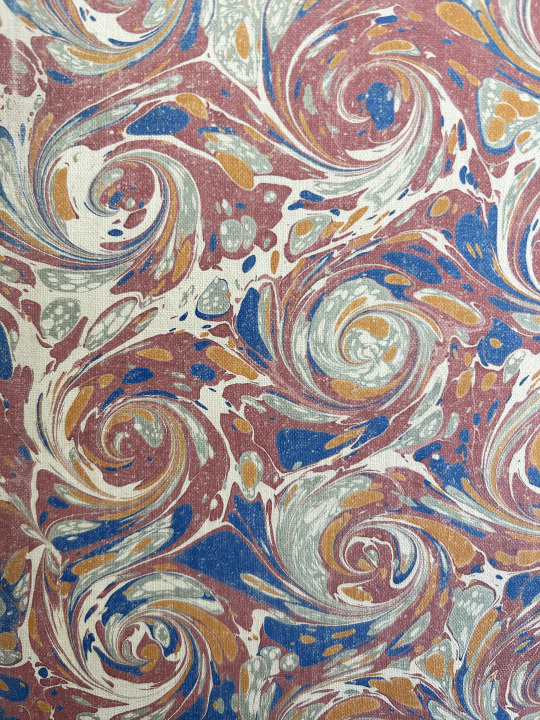
Marbled Monday
This sunny Marbled Monday, as we here in Wisconsin wait for the weather to catch up to the seasons and feel spring-like, I’ve selected The Seasons by Scottish poet and playwright James Thomson (1700-1748). There have been many editions of The Seasons since its first publication as a complete series of four poems in 1730—this one was published by The Nonesuch Press in 1927. It features five illustrations by an artist simply identified as Jacquier, who I have been unable to otherwise identify. The images are copperplate engravings made by C. Sigrist that were hand colored using watercolor through stencils at The Curwen Press.
The marbling is a very curly French curl or snail pattern, featuring red, blue, orange, cream, and a greenish-grey. This pattern is created by first dropping colors in to the water bath and then taking a comb with regularly spaced teeth and swirling it in the water bath to make the snail pattern.
View more Marbled Monday posts.
-- Alice, Special Collections Department Manager
#Marbled Monday#The Seasons#James Thomson#The Nonesuch Press#Jacquier#Charles Sigrist#C. Sigrist#The Curwen Press#French curl#snail patter#marbling#marbled paper#Alice
2K notes
·
View notes
Text


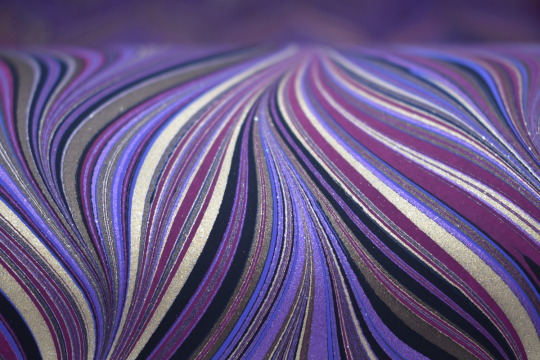
This gorgeous purple and violet Waved Gelgit will also be available at the shop next Monday, July 24th. Release time is 12 UTC. Don't miss!
Home | Renato Crepaldi Hand Marbled Papers (bigcartel.com)
#renato crepaldi#marbled paper#bookbinding#decorativepaper#handmade#pattern#surface design#bookmaking#interior design#bookarts#papermarbling
454 notes
·
View notes
Text

Psalter from a Psalter-Hours (second half in Paris), Marbled paper, Walters Manuscript W.113, Back flyleaf ii,v
This Psalter, dating to the last quarter of the thirteenth century, was made in French Flanders for use in the diocese of Metz. Originally part of a Psalter-Hours, the two parts of the book were separated long ago and bound separately in the eighteenth century. The Hours half has recently been identified by François Avril as belonging to the Bibliothèque nationale de France, where it is n.a. Lat. 915. The Psalter component is heavily decorated, containing historiated initials as well as borders and line fillers full of hybrid creatures and grotesques.
Walters Art Museum
137 notes
·
View notes
Text

Oceans of Blue and Gold
This marbled paper comes from The Butterflies of Australia (1914) by Gustavus A. Waterhouse.
View more in Biodiversity Heritage Library with thanks to Museums Victoria and the Atlas of Living Australia for digitizing.
93 notes
·
View notes
Text




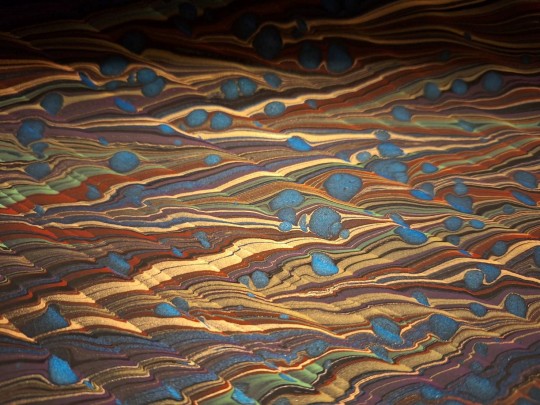

Visiting the bookbinders fair in Leiden (NL) I came out with a couple of very pretty handmade marbled papers by Papiers Prina from Belgium.


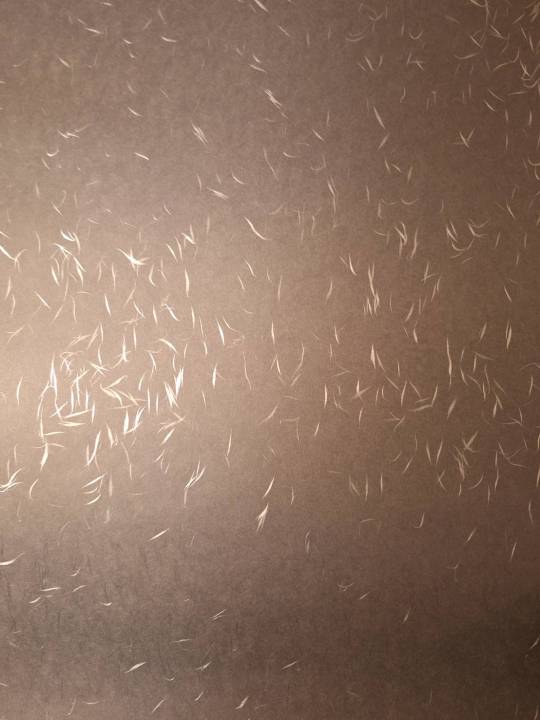



I could also check out the tairei papers I've seen online but hadn't been sure how they would look. The speckles have a wonderful metallic sheen and especially the grey/silver one is very subtle. The flakes of silver flash surprisingly like fish bellies in a pond.
68 notes
·
View notes
Text

Book art is just stunning sometimes.
From: Park, Mungo, 1771-1806. The life and travels of Mungo Park. Edinburgh : W.P. Nimmo ; Hay & Mitchell, 1896.
DT356.P3 1896
#marbling#marbled paper#marbled#marbled endsheet#book art#beautiful paper#endsheets#19thcentury#libraryofva#1890s#specialcollections#rarebooks
65 notes
·
View notes
Text
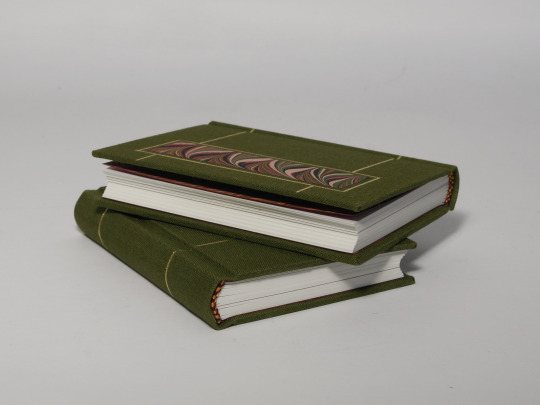
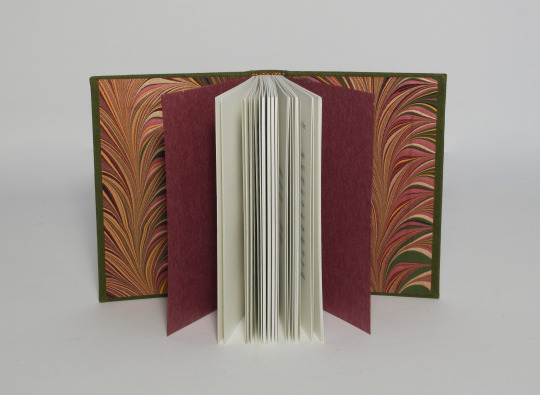

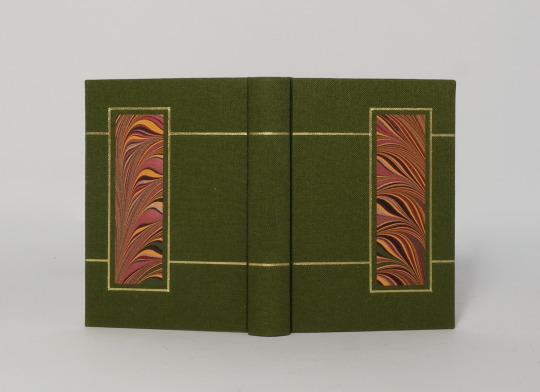

Fullclothbinding with marbled paper onlays and heat stamped decoration.
The design was loosely inspired by traditional chinese bindings and this binding by Dimitris Koutsipetsidis (please check out his work and blog and shop and everything!)
Materials used
case:
1,5 binders board and cardboard - (case construction)
Iris bookcloth, paperbacked - (cover material)
marbled paper by Renato Crepaldi - (paper onlays)
heat activated foil - (cover decoration)
inner book:
Munken polar, 100gsm - (text paper)
Satogami paper - (second fly leaf, story divider)
marbled paper by Renato Crepaldi, 80gsm - (endpapers)
buttonhole silk - (endbands)
#bookbinding#full cloth binding#marbled paper#renato crepaldi#dimitris koutsipetsidis#renato crepaldi marbled paper#satogami paper#handsewn endbands
138 notes
·
View notes
Text
We've been posting materials for #MarbledMonday for years, but for the first time ever, we get to post our own work. On Saturday, Jim Downey of Legacy Bookbindery led students, faculty members and librarians in a paper marbling workshop. Watch the video to see what we learned!
#marbled monday#marbled paper#paper marbling#bookhistory#special collections#rare books#university of missouri#mizzou#libraries#kelli h
70 notes
·
View notes
Text
There are so many different patterns of marbled paper out there! Marbling is done by suspending colorful inks in a bath of semi-viscous fluid, then placing a piece of paper on top; when you lift the paper, it picks up the inks. You often find marbled paper on the bindings or endleaves of books 📚 Douglas Cockerell and Son in the UK were known for their INCREDIBLE marbled paper patterns in the middle quarter of the 20th century – this is one of their paper sample books, and how their paper looks in a binding 😍
You can see more of Douglas Cockerell and Son's marbling process here!
344 notes
·
View notes
Text


Marbled papers used for the cover on Isl Ms 710, Aḥmad al-Ṭabbākh al-Azharī's (أحمد الطباخ الأزهري) Arabic translation of an Italian mathematical compendium, which he titled al-Bahjah al-sanīyah fī mabdaʾ al-ʻulūm al-riyāḍīyah (البهجة السنية في مبدأ العلوم الرياضية)
In his preface, al-Ṭabbākh indicates that he studied Italian and prepared this translation in one of the schools established in Egypt under the educational initiatives of Muhammad Ali Pasha (r.1805-1848).
In his colophon, al-Ṭabbākh indicates that he wrote out this fair copy of his translation on the last day of the month of Dhū al-Qaʻdah 1239 (ca 27 July 1824)
Browse the entire manuscript here
#marbled monday#marbled paper#ebru#ebrusanatı#ابرو#ابر و باد#الايبرو#ابرو باد#manuscripts#Islamic Manuscripts#illuminated manuscripts#special collections#special collections libraries#special collections and archives#archives#libraries and archives#libraries#المخطوطات#المخطوطات العربية#yazmalar#yazma eserler#نسخه های خطی#مخطوطات#المخطوطات الاسلامية#manuscript culture#book arts#arts of the book#paper marbling#decorative paper#Egypt
77 notes
·
View notes
Text


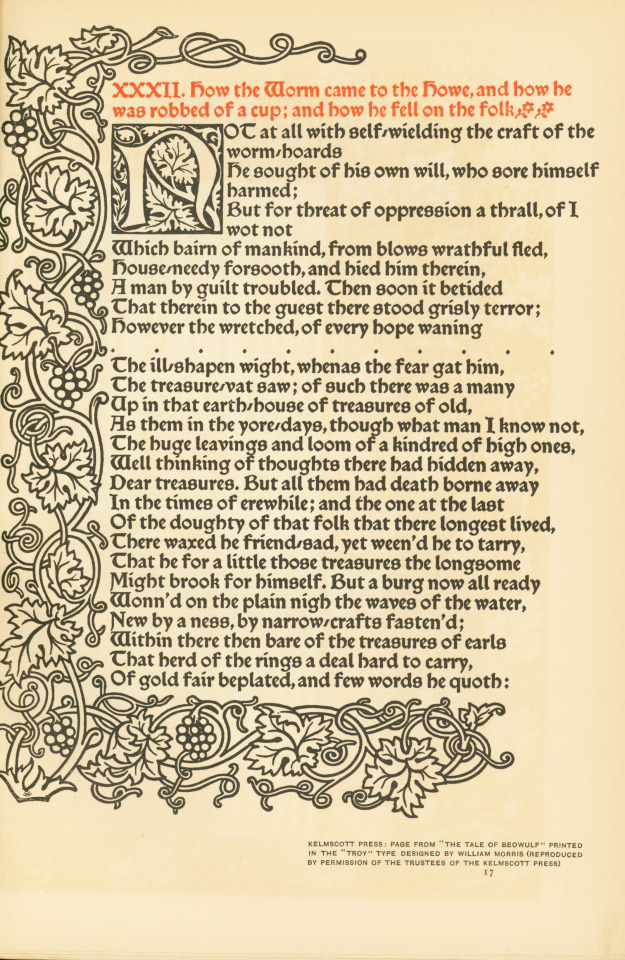
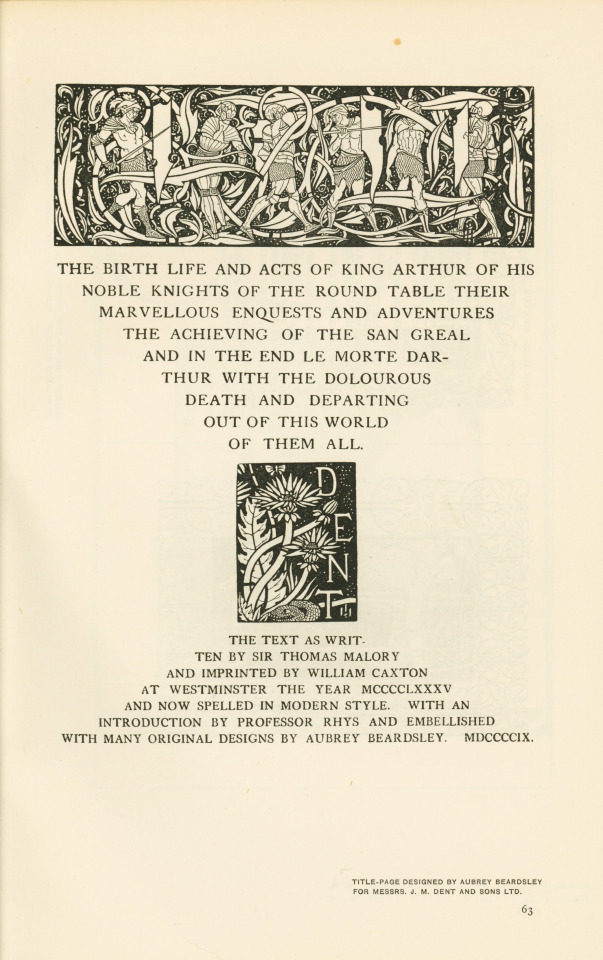

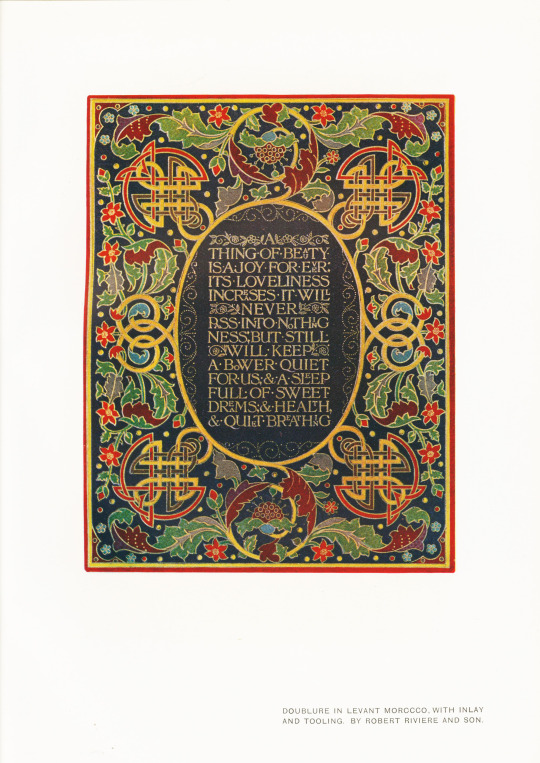


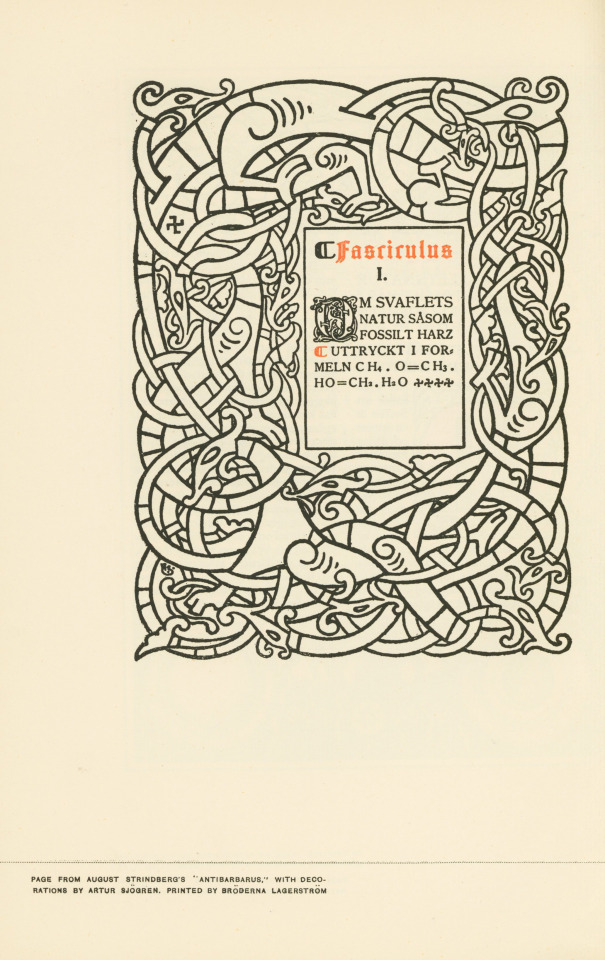
Marbled Monday
This week's Marbled Monday is all about The Art of the Book! The Art of the Book: A Review of Some Recent European and American Work in Typography, Page Decoration & Binding was created by Charles Holme and published in New York and London by "The Studio" Ltd. in 1914. It includes examples of many different contemporary trends and styles and elements of book design, some of which are shown here.
It also includes a lovely binding with some interesting marbled paper. It is half bound in leather with marbled paper over boards. I say the marbling is interesting because it doesn't really follow an established pattern. It's most nearly a Turkish or stone pattern, but includes some irregular swirling that was done with a stylus. The colors are a great contrasting mix of light and dark blue, orange, and brownish maroon. The light blue is actually just the color of the paper itself, which we can tell because of the wear to the cover where it has worn through the marbling.
View more Marbled Monday posts.
-- Alice, Special Collections Department Manager
#Marbled Monday#Art of the Book#Charles Holme#The Studio#marbling#paper marbling#marbled paper#Turkish patter#stone pattern
74 notes
·
View notes
Text




Blue and red Waved Gelgit marbled paper. Marbled with black, blue, red and metallic gold veins, with cream stir, and turpentine spots on top. Only 10 sheets available! Signed and dated. Base paper is cream, 80 gsm, long grain. Sheet size is 66 x 94 cm (26" x 37").
Also from the new collection!
https://renatocrepaldi.bigcartel.com/
#renato crepaldi#marbled paper#bookbinding#decorativepaper#handmade#pattern#marbling#surface design#bookmaking#interior design
134 notes
·
View notes
Text
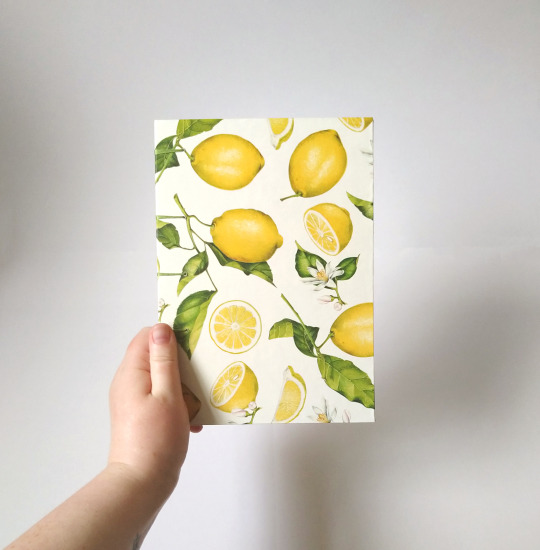


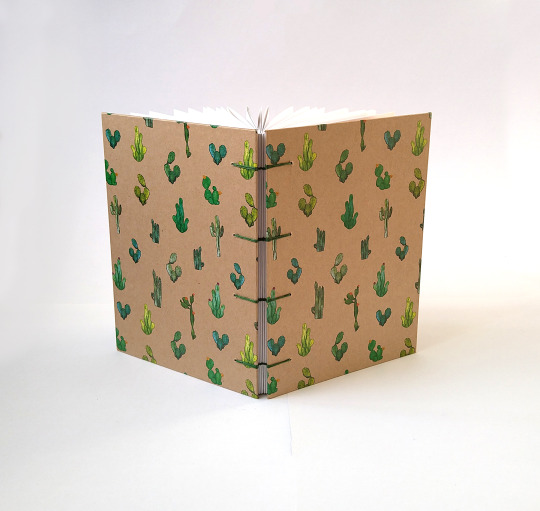
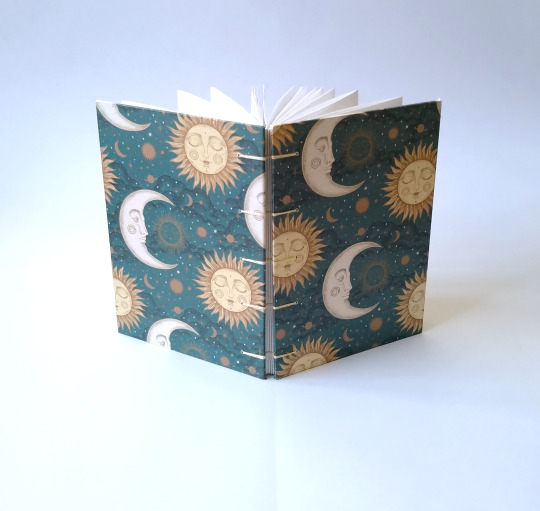

Coptic-bound A5 sketchbooks from Dusted Sunshine Sketchbooks on etsy.
#handmade#bookbinding#etsy#etsy shop#sketchbooks#paper crafts#lemons#the great wave#cactus#cacti#suns and moons#tigers#marbled paper
20 notes
·
View notes
Text
Starting two new notebooks today for calculus and geometry. Been hoarding these blanks for years. Time to fill ‘em up! I’m delighted with how perfect the “arthropod angel” stickers by @ketrinadrawsalot look on the marbled paper!
It’s the holy primordial soup!
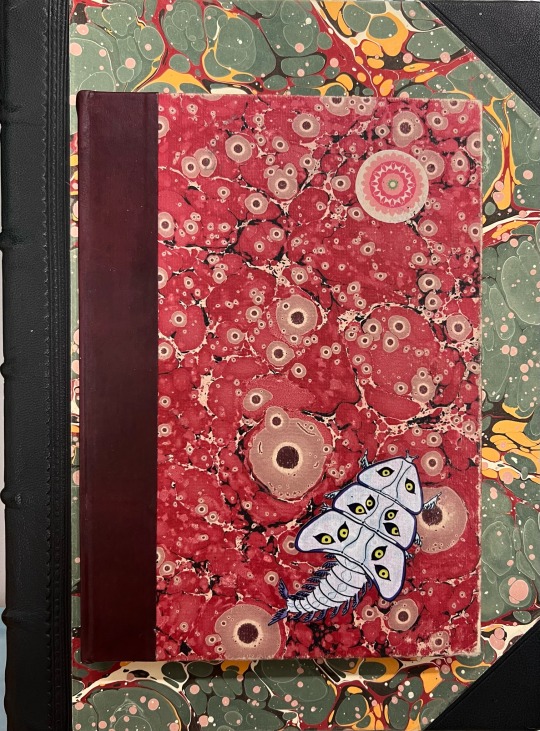
#insert angels#insects#bugs#bugblr#invertebrates#notebooks#blank books#marbled paper#book binding#math#math notes#math notebooks#blank notebooks#paper#office supplies
45 notes
·
View notes
Text
(There is text below, if you’d care to read it)










I was looking at the photos above to see if any of the books had marbled fore edges (Gabriel Jim might be holding such a book in the first photo, but it might just be a trick of the light on ragged fore edges) and at the 3/4 binding on A Tale of Two Cities (4th photo) because I tend to get overexcited about marbled paper in/on old books, and though many questions that have arisen from this, I’ve only included a couple below.

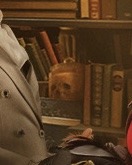
Why is there what appears to be a skull in a jar in Aziraphale’s shop?? …is it poor Yorick?

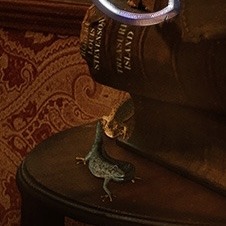
And what’s up with this little lizardy dude?

Let’s take a moment to ooh and ahh over the marbled paper and appreciate whoever in the props department found/made it. I know you can’t judge a book by it’s cover, but it’s always a nice bonus if it has marbled paper on the cover/fore edges/endpapers. I also love it because one day I got bored (and apparently had too much free time on my hands) so I decided to get a second copy of Good Omens (because I thought it would be easier with a hardcover than the paperback I already have) and make it look as close to an 18th century book as I could with my level of skill (which does not include bookbinding), and one part of that was gluing/using double sided tape some period style marbled paper over the cover/binding.
#thought(s) from yours truly#good omens#neil gaiman#gnu terry pratchett#aziraphale#a z fell and co.#william shakespere#shakespeare#hamlet#poor yorick#lizard dude#marbled paper#marbled fore edges#old books#old books (binding)#good omens the nice and accurate prophecies of agnes nutter witch#18th century
41 notes
·
View notes